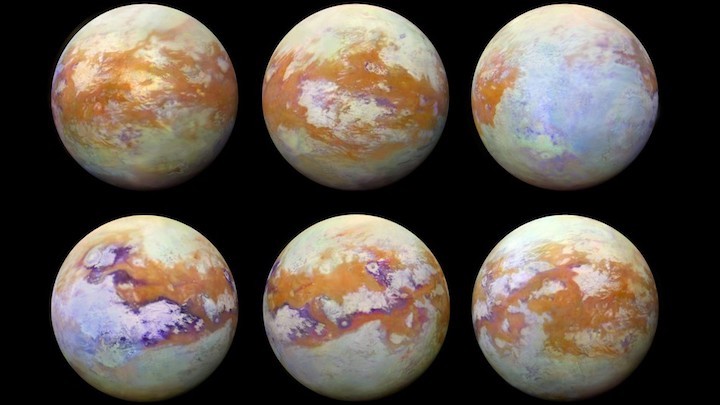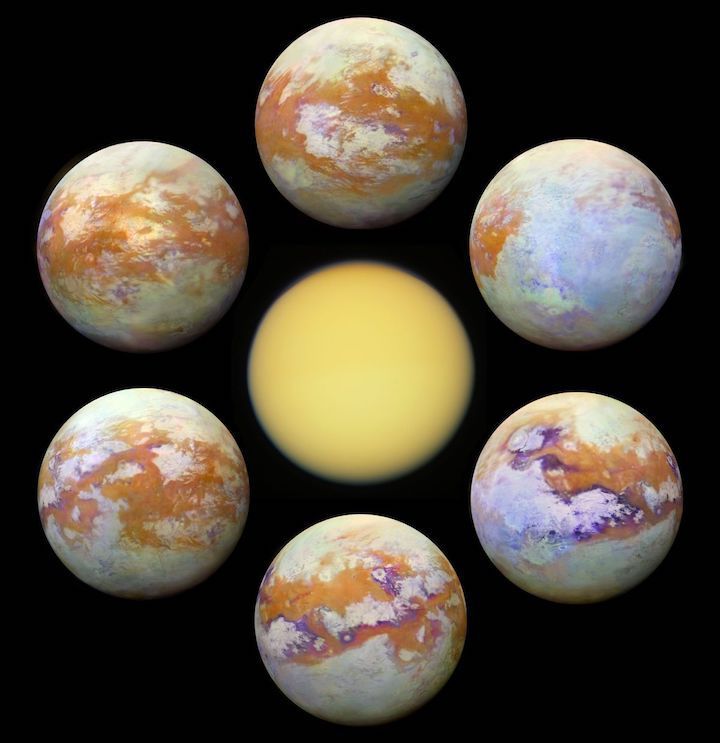20.07.2018

Long live Cassini, which has delivered the clearest views of Saturn's moon, Titan, to date.
Six infrared images of Titan have been captured by the noble Cassini spacecraft, which, after 13 years of exploration, finally (and sadly) burned up in Saturn's atmosphere in September 2017.
The images are some of the clearest global views of the moon's surface produced to date. You can spy Titan's icy surface in incredibly clear detail.
According to NASA, the photographs were created using 13 years of combined data from the Cassini spacecraft, acquired by an on-board instrument called the Visual and Infrared Mapping Spectrometer.
Over a vast number of flybys, VIMS made a variety of observations under different lighting, atmospheric and viewing conditions during the course of Cassini's mission, resulting in those six detailed views seen above. These images are particularly special as previous mapping attempts displayed obvious seams between different areas on Titan's surface — these seams have been hand processed by imaging scientists, a rather time-consuming task.
"With the seams now gone, this new collection of images is by far the best representation of how the globe of Titan might appear to the casual observer if it weren't for the moon's hazy atmosphere, and it likely will not be superseded for some time to come," reads NASA's online statement.

Titan isn't the easiest to photograph either, as the moon is enveloped by a significant haze. According to NASA, this is due to small particles called aerosols in Titan's upper atmosphere scattering visible light. Cue Cassini's VIMS, which employed infrared wavelengths to part the haze and snag those incredibly clear images.
Wondering exactly what you're looking at here? From the images, scientists have determined that Titan has a pretty complex surface, sporting myriad geologic features. The team has used what's known as the "band-ratio" colour technique in order to distinguish between areas on Titan's surface. You can see the equatorial dune fields in brown, and what could be water ice-enriched areas in blue and purple.
Since the Cassini spacecraft launched in 1997, it had been exploring Saturn and its many moons, including Titan, since it arrived in 2004. Although it's now sadly gone, we're still reaping the rewards.
Quelle: Mashable
